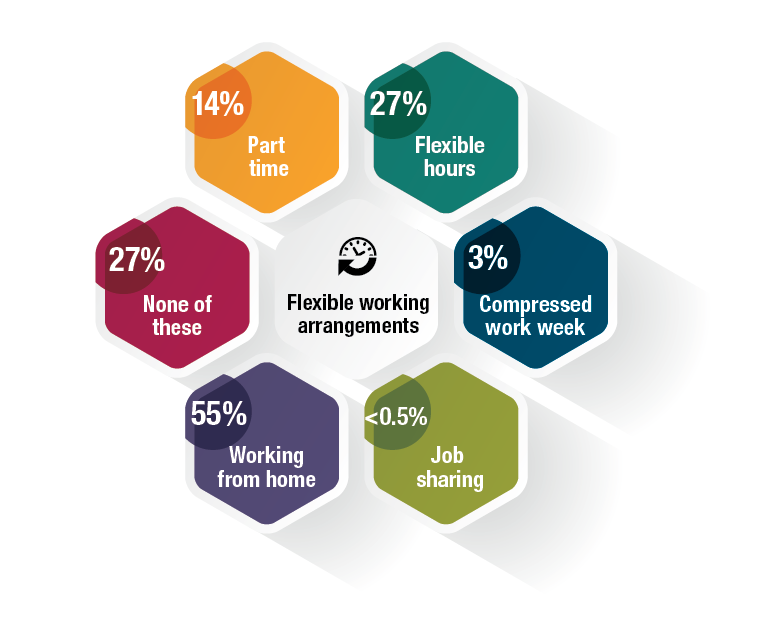7.4 Flexible work
The APS has long offered flexible work arrangements for staff (Figure 7.3), however COVID-19 transformed working from home arrangements with flexibility adopted at scale.[58]
Flexible work in the APS may take many forms, including:
- flexible conditions such as part-time work and/or job sharing
- changes to hours or patterns of work (that is, flexible start and finish time or compressed hours)
- flexible work locations such as home-based work, remote work, telework and hybrid working arrangements.
Flexible work has numerous benefits, not only for the APS but the broader economy. Flexible work arrangements and providing the workforce with options is likely to see increased productivity and workforce participation, greater employee satisfaction, improved work culture, more diverse teams and greater retention of talent – reducing overall recruitment costs.[59]
Figure 7.3: Access to flexible working arrangements

Source: 2022 APS Employee Census
The use of flexible working arrangements in the APS pre-dates COVID-19 and will be a mainstay for the APS to be seen as an employer of choice.
The shift of working away from the office at least some of the time is a trend that continues to increase for the APS. A total of 55% of respondents to the 2022 APS Employee Census had arrangements in place to work away from the office or from home at least some of the time (Figure 7.3), an increase of nine percentage points from 2021. Flexible work hours and part-time work also feature prominently in flexible working arrangements across the APS.
In 2022, more than three-quarters of APS Employee Census respondents (78%) agreed they are confident that if they requested a flexible work arrangement, their request would be given reasonable consideration. This is a positive trend, up three percentage points from 2021.
As a system, the APS needs to be mindful, in the context of a competitive marketplace for talent, that reasonable consideration is offered in a request for flexibility – in line with an ‘if not, why not’ principle. As found in the ABS Household Impacts of COVID-19 Survey, working from home and spending more time with family and friends were the two most common aspects of life wanted to see continue after COVID-19 ended.[60]
The Future of Work Sub-committee is also exploring how the flexible work options offered within the APS can feature in the APS employee value proposition in its attraction and retention strategies. The APS needs to balance flexibility with the importance of building a culture, so staff develop networks of influence and understanding that learning is often advanced through collaboration in an office setting.
Footnotes
[58] APSC, State of the Service Report 2020–21: Reform in the shadow of COVID, 29 November 2021.
[59]LR Soga et al., Unmasking the other face of flexible working practices: A systematic literature review, 8 January 2022.
[60] ABS, Household Impacts of COVID-19 Survey, 14 July 2021.



